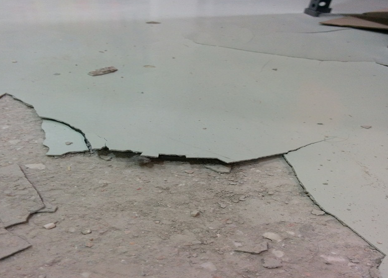Epoxy is very popular with many homeowners because of its durability and versatility. Also, industrial epoxy coatings are commonly used for industrial and commercial flooring. Epoxy flooring is great if applied properly but a lot of beginners tend to make common mistakes when applying epoxy coatings. This can ruin or weaken the epoxy resin and you end up with undesirable results. Here are 3 common mistakes to avoid when applying epoxy and how to fix them.
1. Poor Surface Preparation
Surface prep is the most important stage of epoxy flooring and if you don’t do it correctly, you won’t get the desired results. Many people want to rush through the surface prep stage but this is not an ideal thing to do. If you don’t prepare the surface properly the epoxy floor will break and you don’t want that to happen. So make sure you’re doing proper surface prep and by proper we mean grinding and cleaning the surface so you will not have any problems when the epoxy needs to bond with the concrete. Remember, it’s not just chemical bonding but also mechanical bonding. So make sure the resin bonds with the concrete chemically and mechanically.
2. Poor Mixing Of the Resin
The second common mistake we are seeing is that the resin is not being mixed properly. Epoxy systems are two-component systems, in other words you have an A component and a B component and you need to mix these together before you apply them. What happens if you don’t mix them properly? Well, the worst thing you’ll get is sticky floors and there is nothing worse than having a sticky floor because the A and the B component were not mixed properly together. You’ll also get other problems like the loss of hardness, the floor getting dirty very quickly, and poor bonding because the resin has not been cured properly.
An important point to note is to always mix thoroughly when you’re mixing the A and the B component. A lot of rookies make a mistake of confusing weight with volume. When you read three to one weight, it doesn’t necessarily mean it’s a three to one volume. Weight and volume of the epoxy are different, so do not mix these two up because that could lead to curing problems.
3. Bubbles in the Screed
A lot of beginners tend to get a lot of bubbles in their epoxy screed. Now what causes bubbles? The main cause is air in the concrete slab; you get a lot of bubbles where there’s air in the concrete slab. So how do you prevent that from happening? The main way to prevent that is you need to make sure you have primed and sealed the surface very well so the air from the concrete cannot rise and attack the coating.
One other great way to prevent bubbles in your coating is to always use a spiked roller especially when you’re applying thick leveling coatings. This is because when you are applying a thick epoxy screed you will always get little bubbles. A spike roller can help to eliminate all the bubbles and ensure you get a beautiful smooth surface.



Trackbacks/Pingbacks
Put the epoxy mixture from each two-part bottles out onto a piece of cardboard. Then Mix the components thoroughly with a putty knife.